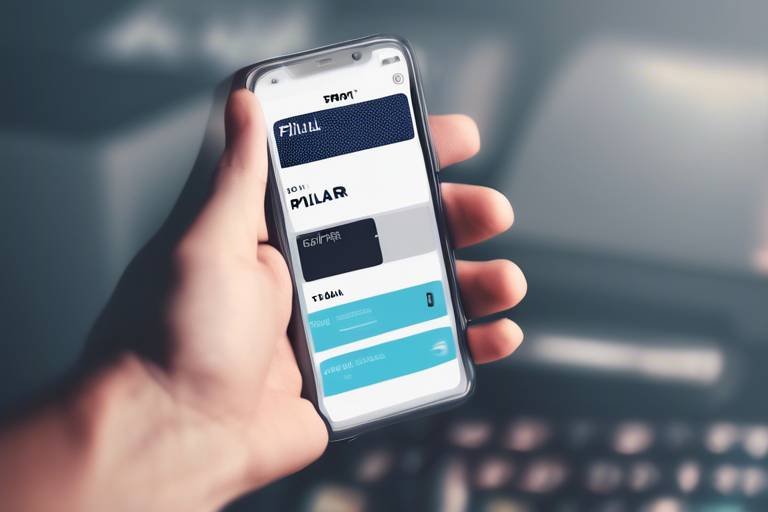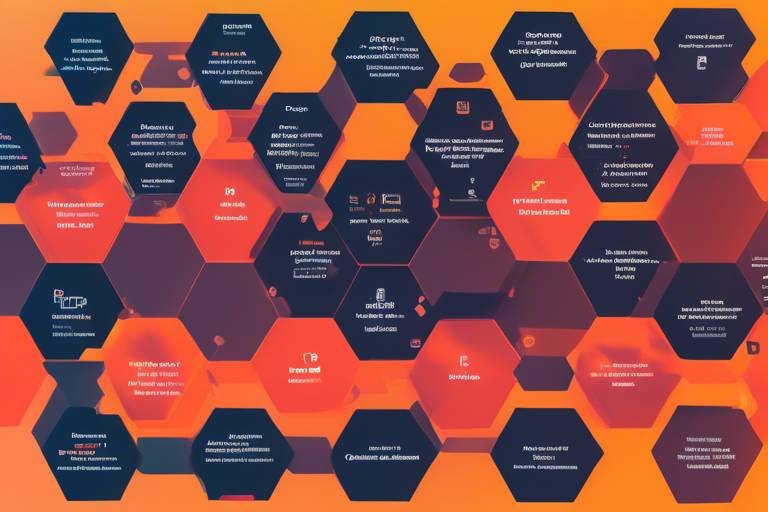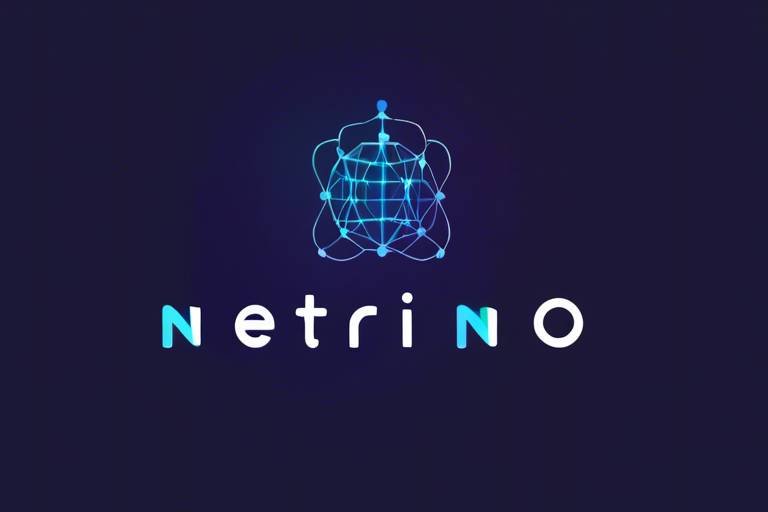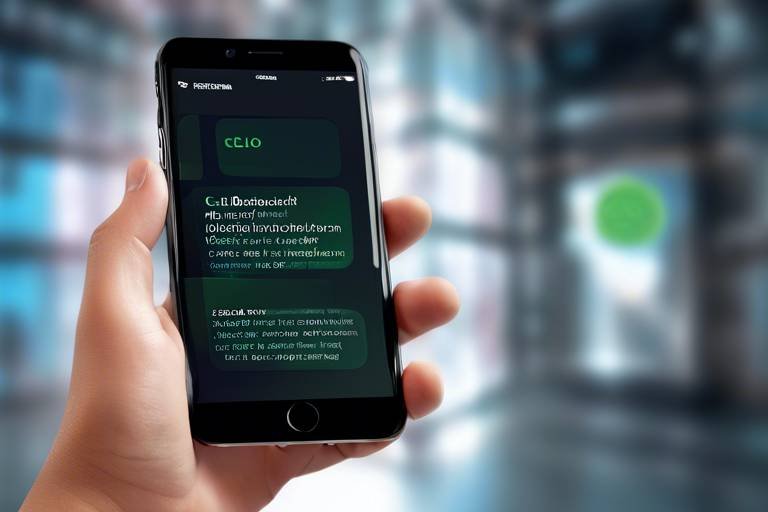Cardano - The Future of Smart Contracts
Imagine a world where digital contracts execute themselves flawlessly, where trust is built into the very fabric of the technology we use. Welcome to Cardano, a revolutionary blockchain platform that is not just another player in the field, but a game-changer. Cardano is designed with the future in mind, aiming to provide a more secure, scalable, and sustainable environment for smart contracts than any of its predecessors. Its innovative architecture and unique features set it apart in the competitive blockchain landscape, making it a beacon of hope for developers and users alike.
At its core, Cardano is all about empowerment. It strives to create a platform where developers can build complex applications without the fear of compromising security or performance. Think of it as a well-structured city where every building (or smart contract) is designed to withstand the test of time, with the infrastructure to support future growth. The vision behind Cardano is not just to keep up with the rapidly evolving tech landscape but to lead the charge towards a more efficient and equitable digital economy.
What makes Cardano truly unique is its layered architecture. This approach separates the settlement layer from the computation layer, allowing for enhanced security and flexibility. It’s like having a solid foundation for a skyscraper; the stronger the base, the taller and more complex the structure can be. This separation not only enhances the user experience but also provides developers with the tools they need to innovate without fear of disrupting the entire network.
Moreover, Cardano employs a proof-of-stake consensus mechanism known as Ouroboros, which is designed to be energy-efficient while maintaining high levels of security and decentralization. This is particularly important in a world increasingly concerned about the environmental impact of blockchain technologies. By reducing energy consumption, Cardano not only positions itself as a sustainable option but also as a responsible choice for developers and users who care about the planet.
As we delve deeper into Cardano's features, we uncover its commitment to interoperability and scalability. In a world where blockchains often operate in silos, Cardano aims to bridge these gaps, allowing for seamless communication between different networks. This capability not only enhances its utility but also fosters a collaborative ecosystem where innovation can thrive. Cardano's innovative solutions, such as sidechains and sharding, are designed to tackle scalability challenges head-on, ensuring that as the user base grows, performance remains unaffected.
In summary, Cardano is not just a platform; it’s a vision for the future of smart contracts. Its unique architecture, energy-efficient consensus mechanism, and commitment to interoperability and scalability position it as a leader in the blockchain space. As we continue to explore the capabilities of Cardano, it becomes clear that it is paving the way for a new era of digital contracts, where security, efficiency, and sustainability are not just goals but realities.
- What is Cardano? - Cardano is a blockchain platform designed for smart contracts, focusing on security, scalability, and sustainability.
- How does Cardano's architecture differ from other blockchains? - Cardano features a layered architecture that separates its settlement and computation layers, enhancing security and flexibility.
- What is the Ouroboros consensus mechanism? - Ouroboros is Cardano's proof-of-stake consensus mechanism, designed to be energy-efficient while ensuring high security and decentralization.
- Why is interoperability important for Cardano? - Interoperability allows Cardano to communicate with other blockchains, enhancing its utility and fostering collaboration.
- How does Cardano address scalability challenges? - Cardano implements solutions like sidechains and sharding to efficiently process more transactions and support a growing user base.

Introduction to Cardano
Welcome to the world of Cardano, a blockchain platform that is turning heads and raising eyebrows in the tech community. Imagine a place where innovation meets security, and where the future of smart contracts is being reshaped. Cardano is not just another player in the blockchain game; it’s a visionary project that aims to provide a more secure and scalable environment than many of its predecessors. With its unique architecture, it sets itself apart in an increasingly crowded space, offering solutions that could potentially redefine how we think about smart contracts.
At its core, Cardano is built on the philosophy of research-driven development. This means that every feature and upgrade is backed by scientific evidence and peer-reviewed research, ensuring that the platform is not only innovative but also reliable. Think of it as the difference between a fast food burger and a gourmet meal—Cardano is the latter, carefully crafted with the finest ingredients.
One of the standout aspects of Cardano is its layered architecture. Picture a multi-story building where each floor serves a different purpose. In this case, Cardano separates the settlement layer, which handles transactions, from the computation layer, where smart contracts come to life. This separation allows for enhanced security and flexibility, enabling developers to create more complex applications without compromising the network's integrity.
In essence, Cardano is like a Swiss Army knife for blockchain technology—versatile, efficient, and designed to tackle a variety of challenges. As it continues to evolve, it aims to not only meet the needs of its current users but also to pave the way for future innovations. With a focus on sustainability and a commitment to reducing its environmental impact, Cardano is positioning itself as a leader in the blockchain revolution.
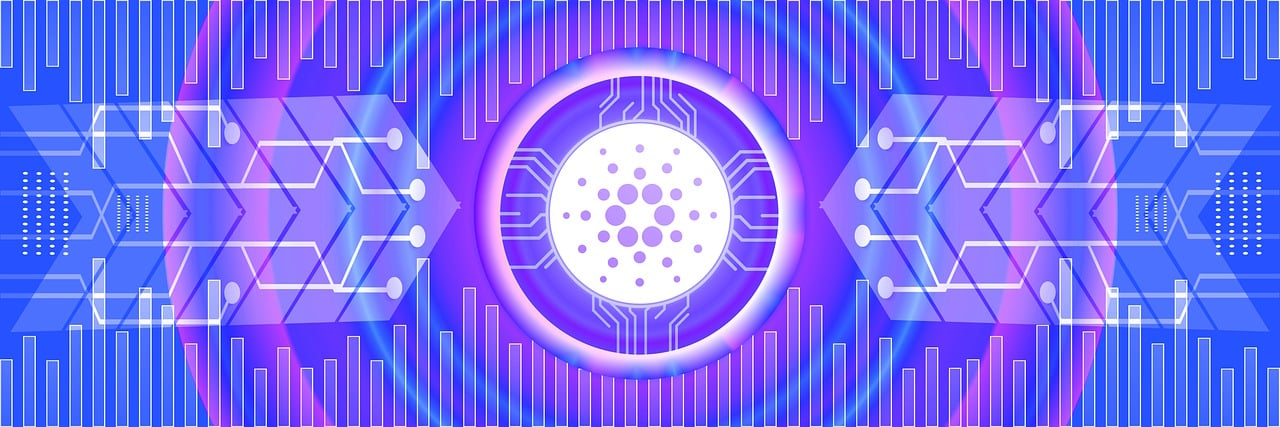
Key Features of Cardano
Cardano is not just another blockchain platform; it’s a meticulously crafted ecosystem that brings several key features to the table. One of the standout aspects of Cardano is its layered architecture, which separates the settlement and computation layers. This innovative design enhances both security and flexibility, allowing developers to create complex applications without compromising the integrity of the network. Imagine a well-organized library where each section has its own purpose, making it easier to find what you need without the chaos of mixed genres. That's how Cardano operates with its layers!
Another significant feature is its proof-of-stake consensus mechanism, known as Ouroboros. Unlike traditional proof-of-work systems that consume vast amounts of energy, Ouroboros is designed to be energy-efficient while still maintaining high levels of security and decentralization. This not only reduces the environmental impact but also democratizes the process of validating transactions, allowing more users to participate in securing the network. Think of it as a community garden where everyone contributes, rather than a single farmer using heavy machinery.
Moreover, Cardano places a strong emphasis on interoperability. In a world where various blockchains are vying for attention, Cardano aims to be the bridge that connects them all. Its design includes features that facilitate cross-chain communication, enabling seamless interactions with other blockchain networks. This capability not only enhances Cardano's utility but also fosters collaboration across the blockchain ecosystem. Picture a bustling marketplace where vendors from different backgrounds come together to offer their goods, creating a vibrant and diverse community.
In addition to these features, Cardano is committed to addressing scalability challenges. With the growing number of users and applications, scalability is a pressing concern for many blockchain platforms. Cardano tackles this issue head-on by implementing innovative solutions such as sidechains and sharding. These strategies allow Cardano to process more transactions efficiently, supporting a burgeoning user base without sacrificing performance. It's like adding extra lanes to a busy highway, ensuring that traffic flows smoothly even during peak hours.
In summary, Cardano’s unique features—layered architecture, proof-of-stake consensus, interoperability, and scalability—work in harmony to create a robust platform for smart contracts. By focusing on these key elements, Cardano not only enhances its own functionality but also positions itself as a leader in the blockchain landscape, ready to tackle the challenges of tomorrow.
- What is Cardano? Cardano is a blockchain platform designed for smart contracts, emphasizing security, scalability, and sustainability.
- How does Cardano's proof-of-stake work? Cardano uses a mechanism called Ouroboros, which allows users to validate transactions based on the amount of cryptocurrency they hold, making it more energy-efficient.
- What is the significance of Cardano's layered architecture? The separation of the settlement and computation layers enhances security and flexibility, allowing for easier upgrades and complex application development.
- How does Cardano achieve interoperability? Cardano is designed to facilitate communication with other blockchains, enabling seamless interactions across different networks.
- What are sidechains and sharding? These are scalability solutions that allow Cardano to process more transactions efficiently, supporting a growing user base without sacrificing performance.

Layered Architecture
Cardano's is one of its standout features, designed to enhance both security and flexibility. Imagine a well-structured building where each floor serves a unique purpose, allowing for easy renovations without disrupting the entire structure. In a similar vein, Cardano separates its blockchain into two distinct layers: the settlement layer and the computation layer. This innovative design not only improves the overall efficiency of the network but also provides developers with the tools they need to create more complex applications.
The settlement layer is primarily responsible for handling transactions. It ensures the secure transfer of value using the ADA cryptocurrency, which serves as the lifeblood of the Cardano ecosystem. Think of this layer as the financial foundation of a house, where all monetary transactions are recorded and validated. By isolating this function, Cardano can maintain high levels of security while also allowing for quick and efficient transaction processing.
On the other hand, the computation layer is where the magic of smart contracts happens. This layer enables the execution of complex calculations and logic, allowing developers to build decentralized applications (dApps) that can operate seamlessly on the network. The separation of these two layers means that upgrades and improvements can be made to the computation layer without affecting the settlement layer, much like renovating the interior of a building without altering its foundation. This flexibility is crucial for fostering innovation and enhancing user experiences.
Moreover, the layered architecture of Cardano supports a range of programming languages, enabling developers from various backgrounds to contribute to the ecosystem. This inclusivity not only broadens the pool of talent but also encourages a diverse array of applications to flourish, further solidifying Cardano's position in the blockchain landscape.
In summary, Cardano's layered architecture is a game-changer in the world of blockchain technology. By separating the settlement and computation functions, it not only enhances security and flexibility but also paves the way for future innovations. This thoughtful design ensures that Cardano can adapt to the ever-evolving demands of the digital landscape, making it a compelling choice for developers and users alike.

Settlement Layer
The of Cardano plays a pivotal role in the overall functionality of the platform. It's essentially the backbone that handles all transactions and ensures the secure transfer of value. This layer is where the magic happens, as it utilizes the ADA cryptocurrency to facilitate transactions within the Cardano ecosystem. Think of it as the bustling marketplace where all trades occur, with ADA being the currency that fuels this vibrant economy.
One of the standout features of the settlement layer is its emphasis on security and transparency. Every transaction is recorded on the blockchain, creating an immutable ledger that anyone can verify. This not only builds trust among users but also protects against fraud and manipulation. In a world where digital trust is paramount, Cardano's settlement layer offers a robust solution that users can rely on.
Moreover, the settlement layer is designed to be highly efficient. It can process transactions quickly, which is crucial for user experience. Imagine waiting in a long line at a store; nobody enjoys that! Just like a well-organized checkout process speeds things up, Cardano's settlement layer ensures that transactions are completed swiftly, allowing users to get on with their lives without unnecessary delays.
Another significant aspect of the settlement layer is its ability to support various financial applications. Developers can leverage this layer to build decentralized applications (dApps) that require secure and reliable transaction processing. This opens up a world of possibilities, from decentralized finance (DeFi) solutions to gaming applications, all built on a solid foundation that prioritizes security and efficiency.
| Feature | Description |
|---|---|
| Security | Immutable ledger that prevents fraud and manipulation. |
| Efficiency | Quick transaction processing for a smooth user experience. |
| Support for dApps | Enables developers to create various decentralized applications. |
In summary, the settlement layer of Cardano is not just a transactional platform; it's a comprehensive environment that promotes trust, efficiency, and innovation. By utilizing ADA for transactions and maintaining a transparent ledger, Cardano is setting a new standard for blockchain technology. As we continue to explore this exciting platform, it becomes increasingly clear that the settlement layer is a cornerstone of Cardano's vision for the future.
- What is the purpose of the settlement layer in Cardano?
The settlement layer handles all transactions and ensures secure value transfer within the Cardano ecosystem. - How does the settlement layer contribute to security?
It creates an immutable ledger that records every transaction, preventing fraud and ensuring transparency. - Can developers build applications on the settlement layer?
Yes, developers can create decentralized applications (dApps) that utilize the settlement layer for secure transaction processing.
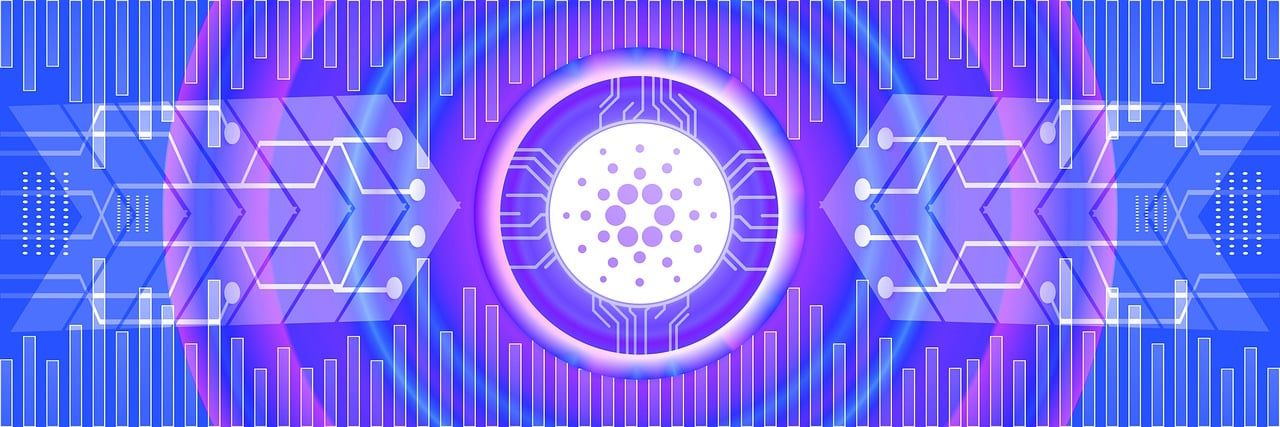
Computation Layer
The of Cardano is where the magic truly happens. It’s the brain behind the operation, allowing developers to create and execute smart contracts that power decentralized applications (dApps). Imagine this layer as a sophisticated engine that runs the applications while keeping everything smooth and efficient. By separating the computation from the settlement layer, Cardano ensures that any upgrades or changes can be made without disrupting the overall functionality of the blockchain. This flexibility is crucial in a rapidly evolving tech landscape where innovation is key.
One of the standout features of the Computation Layer is its ability to support a variety of programming languages. This inclusivity invites a broader range of developers to engage with the platform, fostering a diverse ecosystem of applications. The use of Haskell, a functional programming language, allows for more reliable and secure code, which is essential for the execution of smart contracts. Just like a well-oiled machine, the Computation Layer ensures that everything runs smoothly, minimizing the risk of bugs and vulnerabilities that can compromise security.
Moreover, the Computation Layer is designed with user experience in mind. It enables developers to create complex applications that can handle a variety of tasks, from simple transactions to intricate financial agreements. This capability is akin to building a robust toolbox where each tool is tailored for a specific job, ensuring that developers have everything they need at their fingertips.
In addition to its flexibility and security, the Computation Layer also emphasizes the importance of interoperability. It allows smart contracts to interact not only within the Cardano ecosystem but also with other blockchains. This cross-chain communication is vital for the future of decentralized applications, as it enables a seamless flow of information and value across different networks. Imagine being able to send a digital asset from one blockchain to another with the ease of sending an email; that's the kind of future Cardano is paving the way for.
To summarize, the Computation Layer is a critical component of Cardano's architecture. It provides the necessary environment for building and executing smart contracts while ensuring security, flexibility, and interoperability. As more developers flock to this innovative platform, we can expect to see a surge of creative applications that will redefine how we interact with technology and each other.
- What is the purpose of the Computation Layer in Cardano?
The Computation Layer is responsible for executing smart contracts and supporting decentralized applications, ensuring flexibility and security. - How does Cardano ensure the security of its smart contracts?
By using Haskell, a functional programming language, Cardano minimizes the risk of bugs and vulnerabilities in smart contracts. - Can smart contracts on Cardano interact with other blockchains?
Yes, Cardano's Computation Layer is designed for interoperability, allowing seamless communication with other blockchain networks.
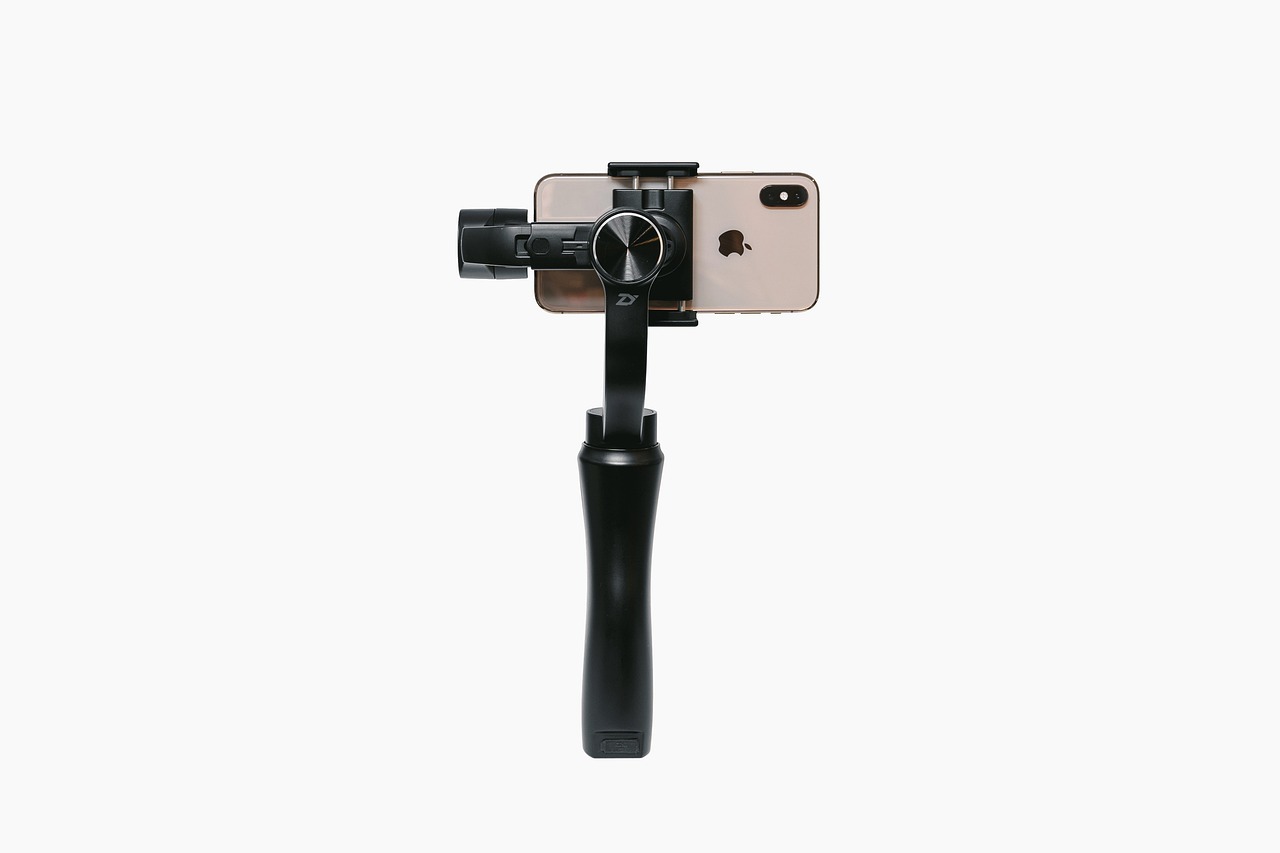
Proof-of-Stake Consensus
When it comes to blockchain technology, the consensus mechanism is like the beating heart of the system, ensuring that everyone is on the same page. Cardano has taken a bold step forward by adopting a proof-of-stake (PoS) consensus mechanism known as Ouroboros. Now, you might be wondering, what’s the big deal about this? Well, let me break it down for you.
Unlike traditional proof-of-work (PoW) systems that require massive amounts of energy and computational power, Ouroboros allows users to validate transactions based on the number of coins they hold and are willing to "stake." This means that the more ADA (Cardano's native cryptocurrency) you own and lock up in the network, the higher your chances of being selected to validate transactions and earn rewards. It’s like a lottery where buying more tickets increases your chances of winning, but you’re not burning through electricity like a wildfire.
One of the standout features of Ouroboros is its energy efficiency. In a world increasingly concerned about climate change, Cardano's PoS model drastically reduces the environmental impact associated with blockchain operations. Instead of relying on energy-intensive mining rigs, Cardano’s validators can participate in the network using standard computer hardware, making it accessible to a broader range of users. This not only democratizes participation but also contributes to a more sustainable future.
Furthermore, Ouroboros is designed to be highly secure. It achieves this by employing a unique method of randomness that makes it incredibly difficult for malicious actors to manipulate the system. The protocol divides time into epochs and slots, where each slot represents a timeframe in which a block can be created. This structured approach ensures that the network remains robust and resilient against attacks.
To illustrate how this works, let’s take a look at a simple comparison between proof-of-work and proof-of-stake:
| Feature | Proof-of-Work (PoW) | Proof-of-Stake (PoS) |
|---|---|---|
| Energy Consumption | High | Low |
| Hardware Requirement | Specialized Mining Equipment | Standard Computer |
| Security | Vulnerable to 51% Attacks | More Resilient with Stake |
| Rewards Distribution | Based on Mining Power | Based on Stake |
As you can see from the table, Cardano’s PoS consensus mechanism not only addresses energy consumption but also enhances security and accessibility. This means that more people can join the network and contribute to its growth without needing to invest in expensive hardware. It’s like opening up a club where everyone can join without the need for an exclusive membership card!
In summary, Cardano’s proof-of-stake consensus mechanism, Ouroboros, is a game-changer in the blockchain world. By prioritizing energy efficiency, security, and accessibility, Cardano is setting the stage for a more sustainable and inclusive blockchain ecosystem. So, whether you’re a seasoned crypto enthusiast or just dipping your toes into the blockchain waters, you can appreciate how Cardano is paving the way for the future.
- What is Cardano? Cardano is a blockchain platform focused on building a more secure and scalable environment for smart contracts.
- How does proof-of-stake work? In proof-of-stake, validators are chosen to create new blocks based on the amount of cryptocurrency they hold and are willing to stake.
- What are the benefits of using Cardano? Cardano offers energy efficiency, enhanced security, and a more inclusive platform for developers and users alike.

Interoperability and Scalability
When it comes to the world of blockchain, interoperability and scalability are often the unsung heroes. Think of them as the dynamic duo that ensures a smooth, efficient, and collaborative environment for all users and applications. Cardano recognizes the importance of these elements and has made them a core focus of its development strategy. By enabling seamless communication with other blockchains, Cardano is not just building a platform; it's constructing a vast network of interconnected ecosystems. Imagine a bustling marketplace where every vendor can easily communicate with each other, share resources, and cater to a larger audience. That's the vision Cardano has for the blockchain landscape.
One of the standout features of Cardano is its ability to facilitate cross-chain communication. This capability is crucial because, in today's diverse blockchain environment, no single blockchain can serve all purposes. By allowing Cardano to interact with other blockchain networks, developers can create applications that leverage the strengths of multiple platforms. For instance, a decentralized finance (DeFi) application built on Cardano could tap into liquidity pools from Ethereum, enhancing its functionality and user experience. This interoperability not only broadens Cardano's appeal but also fosters collaboration across the entire blockchain ecosystem.
Now, let’s talk about scalability. As more users flock to blockchain platforms, the need for efficient transaction processing becomes paramount. Cardano addresses this challenge head-on with innovative solutions like sidechains and sharding. These technologies allow Cardano to process transactions more efficiently, ensuring that the network can handle a growing number of users without sacrificing performance. Just like a well-organized highway system that can accommodate increasing traffic, Cardano's scalability solutions pave the way for a smoother user experience.
To give you a clearer picture, here’s a simple table comparing traditional blockchain scalability solutions with Cardano's approach:
| Scalability Solution | Traditional Blockchains | Cardano |
|---|---|---|
| Transaction Speed | Often slows down with increased users | Maintains speed with innovative solutions |
| Environmental Impact | High energy consumption | Energy-efficient proof-of-stake |
| Interoperability | Limited cross-chain capabilities | Seamless communication with other blockchains |
In conclusion, Cardano's commitment to interoperability and scalability positions it as a frontrunner in the blockchain revolution. By embracing these principles, Cardano is not only enhancing its platform but also paving the way for a more connected and efficient future in the blockchain space. The possibilities are endless, and as more developers and users join the Cardano ecosystem, we can expect to see exciting innovations that push the boundaries of what blockchain technology can achieve.
- What is interoperability in blockchain? Interoperability refers to the ability of different blockchain networks to communicate and share data with each other seamlessly.
- How does Cardano achieve scalability? Cardano utilizes innovative solutions like sidechains and sharding to process transactions efficiently and accommodate a growing user base.
- Why is scalability important for blockchain? Scalability is crucial as it ensures that the network can handle an increasing number of transactions without slowing down or compromising performance.

Cross-Chain Communication
Cross-chain communication is a game changer in the world of blockchain technology, and Cardano is leading the charge. Imagine a bustling marketplace where vendors from different regions can seamlessly trade goods without barriers; that's the vision for blockchain interoperability. Cardano's architecture is designed to facilitate this kind of interaction between various blockchain networks, which is crucial for the ecosystem's growth and adaptability.
At the heart of this innovation lies the concept of interoperability. Cardano enables different blockchains to communicate with each other, allowing users to transfer assets and data across platforms without the need for intermediaries. This is similar to how different social media platforms allow you to share content across various channels, making it easier for users to connect and engage.
To achieve this, Cardano employs a set of protocols and standards that promote collaboration. These protocols ensure that the information shared between blockchains is accurate and secure. By doing so, Cardano not only enhances its own functionality but also contributes to the overall health of the blockchain ecosystem. The ability to interact with other networks opens up a world of possibilities for developers and users alike, creating a rich tapestry of interconnected services.
Furthermore, Cardano's commitment to cross-chain communication means that it can support a variety of applications, from decentralized finance (DeFi) to supply chain management. For instance, a DeFi application built on Cardano could easily integrate with another blockchain that specializes in asset tokenization, allowing users to utilize a broader range of financial products and services.
In summary, Cardano's focus on cross-chain communication is not just a technical feature; it's a pivotal strategy that positions the platform as a leader in the blockchain space. By fostering an environment where different blockchains can work together, Cardano is paving the way for a more interconnected and efficient future.
- What is cross-chain communication? Cross-chain communication refers to the ability of different blockchain networks to interact and share information seamlessly.
- Why is interoperability important? Interoperability allows for greater flexibility and functionality within the blockchain ecosystem, enabling users to access a wider range of services and applications.
- How does Cardano achieve cross-chain communication? Cardano employs specific protocols and standards that facilitate secure and accurate information sharing between different blockchains.
- What are some applications of cross-chain communication? Cross-chain communication can be utilized in various sectors, including decentralized finance (DeFi), supply chain management, and digital identity solutions.

Scalability Solutions
When it comes to blockchain technology, scalability is often the elephant in the room. As more users flock to a platform, the ability to handle increased transaction volumes without compromising speed or efficiency becomes crucial. Cardano recognizes this challenge and has devised several innovative that set it apart from other blockchain platforms. One of the standout features of Cardano’s approach is its use of sidechains and sharding. These strategies allow Cardano to expand its capacity while maintaining the integrity and security of the main blockchain.
Sidechains serve as parallel blockchains that can operate independently but still communicate with the main Cardano blockchain. This means that transactions can be processed on these sidechains, effectively offloading some of the pressure from the main chain. Think of it like a busy highway with multiple lanes: while one lane may be congested, the others can help alleviate traffic, ensuring that vehicles (or in this case, transactions) can still move smoothly. This not only enhances transaction throughput but also allows for specialized functionalities on different sidechains tailored to specific applications.
Sharding, on the other hand, is another groundbreaking technique that Cardano employs to enhance scalability. In a nutshell, sharding involves breaking the blockchain into smaller, more manageable pieces—called shards—that can process transactions simultaneously. Imagine a large city divided into neighborhoods, where each neighborhood has its own local government handling its affairs. This decentralization of processing allows Cardano to handle a larger volume of transactions without bogging down the network. By distributing the workload, Cardano ensures that users experience minimal delays, even during peak times.
To put it simply, Cardano's scalability solutions are like a well-oiled machine, designed to adapt and grow with its user base. As the demand for blockchain technology continues to surge, these innovations will be vital in maintaining Cardano's performance and reliability. With the ability to process thousands of transactions per second, Cardano is positioning itself as a frontrunner in the race to create a sustainable and efficient blockchain ecosystem.
- What is Cardano's primary goal?
Cardano aims to provide a secure and scalable platform for the development of smart contracts and decentralized applications. - How does Cardano ensure security?
Cardano employs a proof-of-stake consensus mechanism called Ouroboros, which enhances security while being energy-efficient. - What are sidechains?
Sidechains are parallel blockchains that allow transactions to be processed independently from the main blockchain, improving scalability. - What is sharding?
Sharding is a method of breaking the blockchain into smaller pieces that can process transactions simultaneously, which helps increase transaction throughput.
Frequently Asked Questions
- What is Cardano?
Cardano is a blockchain platform designed specifically for smart contracts. It aims to provide a more secure and scalable environment compared to earlier blockchain technologies, utilizing a unique architecture that enhances its capabilities.
- How does Cardano's layered architecture work?
Cardano's layered architecture separates the settlement and computation layers. This design allows for greater security and flexibility, enabling developers to build complex applications without compromising the integrity of the network.
- What is the role of the ADA cryptocurrency in Cardano?
ADA is the native cryptocurrency of the Cardano ecosystem. It is used for facilitating transactions within the platform, particularly in the settlement layer, ensuring the secure transfer of value.
- What is the proof-of-stake consensus mechanism used by Cardano?
Cardano employs a proof-of-stake consensus mechanism called Ouroboros. This method is more energy-efficient than traditional proof-of-work systems, reducing environmental impact while maintaining high levels of security and decentralization.
- Why is interoperability important for Cardano?
Interoperability allows Cardano to communicate with other blockchain networks, enhancing its utility. This capability fosters collaboration across the blockchain ecosystem, making it easier for different platforms to work together.
- What scalability solutions does Cardano implement?
Cardano addresses scalability challenges through innovative solutions like sidechains and sharding. These methods enable the platform to process more transactions efficiently, accommodating a growing user base without sacrificing performance.
- How does Cardano ensure security?
Cardano's security is bolstered by its proof-of-stake consensus mechanism and its layered architecture. By separating transaction handling and smart contract execution, it minimizes risks and enhances the overall security of the network.
- Can developers create complex applications on Cardano?
Yes! The separation of the computation layer allows developers to create more complex applications without disrupting the network's functionality. This flexibility is one of Cardano's standout features.
- What makes Cardano different from other blockchain platforms?
Cardano differentiates itself through its unique architecture, focus on interoperability, and energy-efficient proof-of-stake consensus mechanism. These elements work together to create a more scalable, secure, and sustainable blockchain environment.





